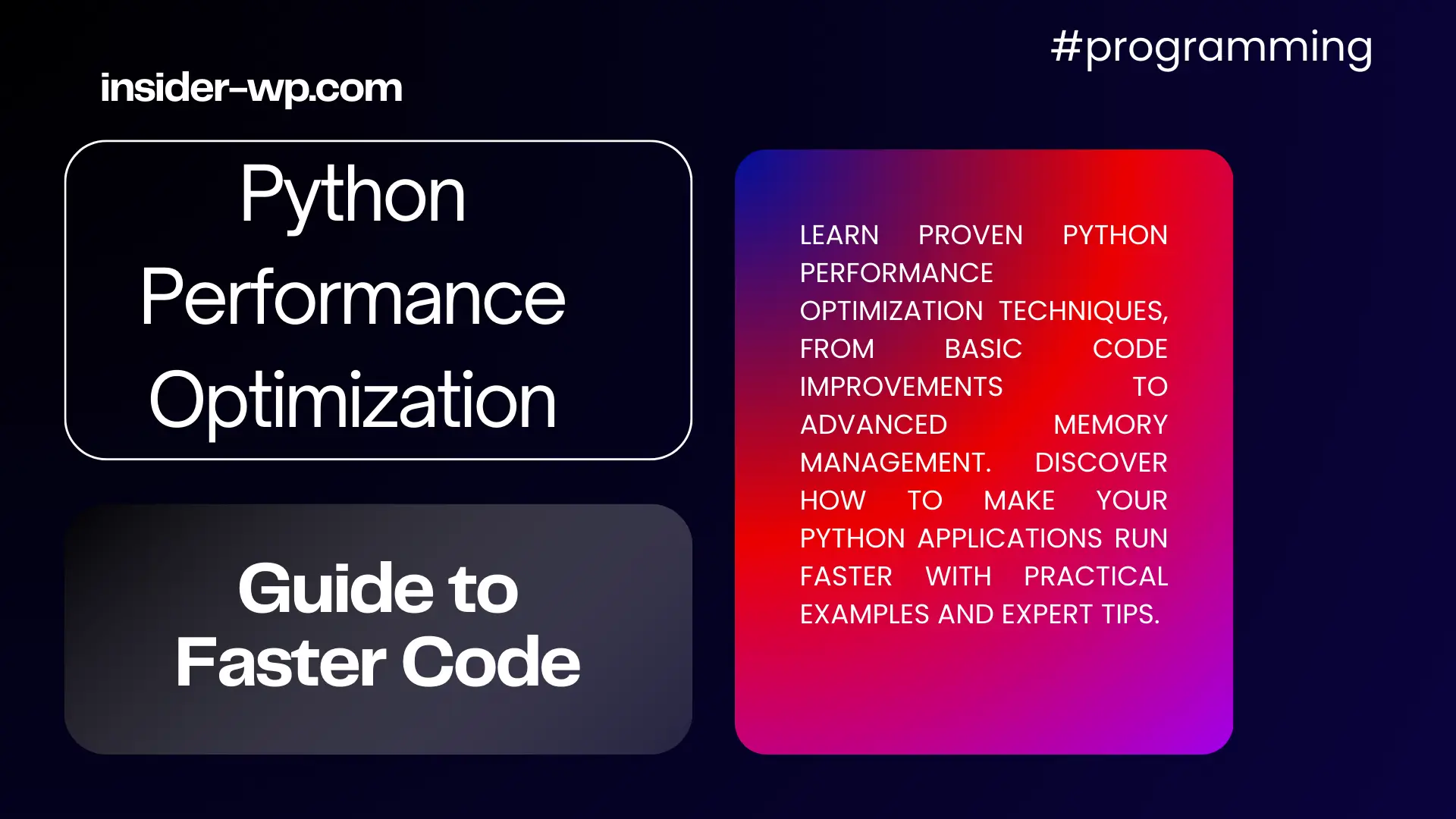Google Ads Mastery: Ultimate Guide to Success

In today’s digital landscape, Google Ads has emerged as a powerhouse for businesses seeking to amplify their online presence and drive meaningful results. As the premier pay-per-click (PPC) platform, Google Ads offers unparalleled reach and targeting capabilities, making it an essential tool for marketers and business owners alike. This comprehensive guide will delve into the intricacies of Google’s advertising platform, equipping you with the knowledge to harness its full potential and stay ahead in the competitive world of digital advertising.
Google Ads, formerly known as Google AdWords, is the backbone of Google’s advertising ecosystem. It’s a sophisticated platform that allows businesses of all sizes to create and display ads across Google’s vast network, including the search engine results page (SERP), YouTube, and millions of partner websites within the Google Display Network.
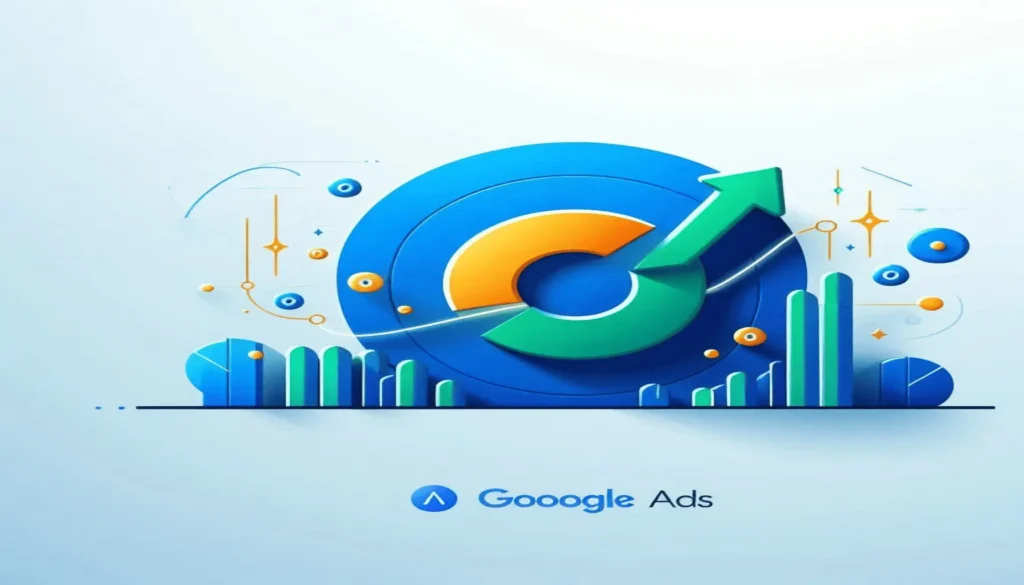
The evolution of Google Ads has been nothing short of revolutionary. Since its inception in 2000, it has transformed from a simple text-based advertising system to a comprehensive suite of advertising tools catering to diverse marketing objectives. Today, Google Ads encompasses a wide array of ad formats, including:
- Search ads: Text-based ads that appear on Google’s SERP
- Display ads: Visual ads shown on websites within the Google Display Network
- Shopping ads: Product listings featuring images and prices
- YouTube ads: Video advertisements displayed before or during YouTube content
- App ads: Promotions for mobile applications across Google’s properties
The significance of Google Ads in 2024 cannot be overstated. With over 5.6 billion searches conducted on Google every day, the platform offers advertisers unprecedented access to potential customers at the precise moment they’re searching for relevant products or services. This level of intent-based marketing is unparalleled in the advertising world.
Moreover, Google Ads’ sophisticated targeting options allow businesses to reach their ideal audience with laser precision. Advertisers can target users based on factors such as:
- Demographics
- Geographic location
- Interests and behaviors
- Search history
- Device type
This granular level of targeting, combined with the platform’s robust analytics and reporting tools, enables advertisers to optimize their campaigns continuously for maximum ROI.
Here’s a quick overview of the key benefits of using Google Ads:
- Immediate visibility: Your ads can appear on the first page of Google search results instantly.
- Measurable results: Track every aspect of your campaign’s performance in real-time.
- Flexible budgeting: Set your own budget and adjust it as needed.
- Targeted reach: Connect with your ideal customers at the right time and place.
- Scalability: Easily scale your advertising efforts as your business grows.
To illustrate the power of Google Ads, consider this case study from Wordstream:
A small e-commerce business specializing in handmade jewelry saw a 300% increase in online sales within three months of implementing a strategic Google Ads campaign. By focusing on long-tail keywords and leveraging Shopping ads, they were able to reach highly interested customers at a fraction of the cost of traditional advertising methods.
As we delve deeper into the world of Google Ads, we’ll explore each aspect of the platform in detail, providing you with the knowledge and strategies needed to create successful campaigns that drive real business results.
Learn more about the basics of Google Ads on the official Google Ads Help Center
In the next section, we’ll examine the various types of Google Ads campaigns and how each can be leveraged to achieve specific marketing objectives.
Types of Google Ads Campaigns
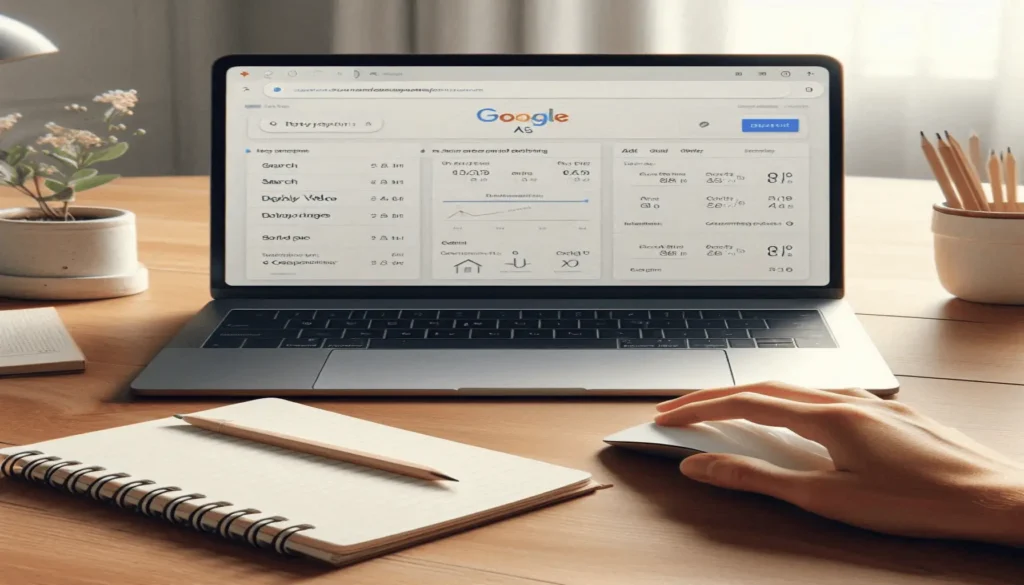
Google Ads offers a diverse array of campaign types, each designed to cater to specific advertising goals and target audiences. Understanding these different campaign types is crucial for crafting a comprehensive digital advertising strategy that maximizes your return on investment (ROI). Let’s explore each type in detail:
Google Search Ads
Google Search Ads are the backbone of the Google Ads platform, appearing on the search engine results page (SERP)when users search for specific keywords. These text-based ads are highly intent-driven, making them incredibly effective for capturing users at the moment they’re actively seeking products or services.
Key features of Google Search Ads:
- Text-based format with headlines, descriptions, and display URL
- Triggered by user searches for specific keywords
- Appear at the top or bottom of the SERP
- Highly targeted based on user intent
To create effective search ads, focus on:
- Relevant, high-quality keywords
- Compelling ad copy that matches user intent
- Strong call-to-action (CTA)
- Optimized landing pages
Google Display Ads
Display ads are visual advertisements that appear on websites, apps, and videos across the Google Display Network, which encompasses over two million sites and reaches over 90% of internet users worldwide. These ads are excellent for building brand awareness and retargeting potential customers.
Types of Display Ads:
- Responsive display ads
- Uploaded image ads
- Engagement ads
Benefits of Display Ads:
- Wide reach across various websites and apps
- Visual format allows for creative branding opportunities
- Effective for remarketing to previous website visitors
- Can target users based on interests, demographics, and browsing behavior
Explore the Google Display Network
Google Shopping Ads
Google Shopping Ads, also known as Product Listing Ads (PLAs), are a powerful tool for e-commerce businesses. These ads showcase your products directly on the SERP and the Google Shopping tab, featuring product images, prices, and merchant information.
Key aspects of Shopping Ads:
- Product feed-based: Requires a Merchant Center account and product data feed
- Visual format with product images and details
- Appears on Google Search, Google Shopping tab, and partner websites
- Highly effective for driving sales and product visibility
To optimize Shopping Ads:
- Maintain an accurate and up-to-date product feed
- Use high-quality product images
- Implement competitive pricing
- Optimize product titles and descriptions for search relevance
Get started with Google Shopping Ads
Google Video Ads (YouTube Ads)
With over 2 billion logged-in monthly users, YouTube offers an immense opportunity for advertisers through Google Video Ads. These ads allow you to reach potential customers through engaging video content on the world’s second-largest search engine.
Types of YouTube Ads:
- TrueView In-Stream Ads
- TrueView Discovery Ads
- Bumper Ads
- Masthead Ads
Benefits of Video Ads:
- Engaging format for storytelling and brand messaging
- Variety of targeting options, including demographics, interests, and video content
- Can drive both brand awareness and direct response actions
- Performance tracking through view rates and engagement metrics
Discover more about YouTube advertising
Google App Ads
For mobile app developers and marketers, Google App Ads provide a streamlined way to promote apps across Google’s properties, including Search, Play, YouTube, and the Display Network.
Key features of App Ads:
- Automated ad creation using assets from your app store listing
- Promotion across multiple Google platforms
- Machine learning optimization for user acquisition and in-app actions
- Deep linking capabilities for existing app users
To maximize App Ads performance:
- Provide high-quality assets (images, videos, descriptions)
- Set clear goals for app installs or in-app actions
- Implement app conversion tracking
- Regularly update your app store listing
Learn how to promote your app with Google Ads
Understanding these different campaign types is essential for creating a well-rounded Google advertising strategy. Each type offers unique advantages and can be leveraged to achieve specific marketing objectives. By combining various campaign types, advertisers can create a synergistic approach that addresses the entire customer journey, from initial awareness to final conversion.
| Campaign Type | Primary Goal | Best For | Key Metric |
| Search Ads | Direct response | Capturing high-intent users | Click-through rate (CTR) |
| Display Ads | Brand awareness | Reaching a broad audience | Impressions, Brand lift |
| Shopping Ads | Product sales | E-commerce businesses | Conversion rate |
| Video Ads | Engagement | Brand storytelling | View rate, Watch time |
| App Ads | App installs | Mobile app promotion | Install rate, In-app actions |
As you plan your Google Ads strategy, consider how each of these campaign types can contribute to your overall marketing objectives. In the next section, we’ll delve into the mechanics of how Google Ads works, including the auction system and Quality Score, to help you optimize your campaigns for maximum performance.
How Google Ads Work
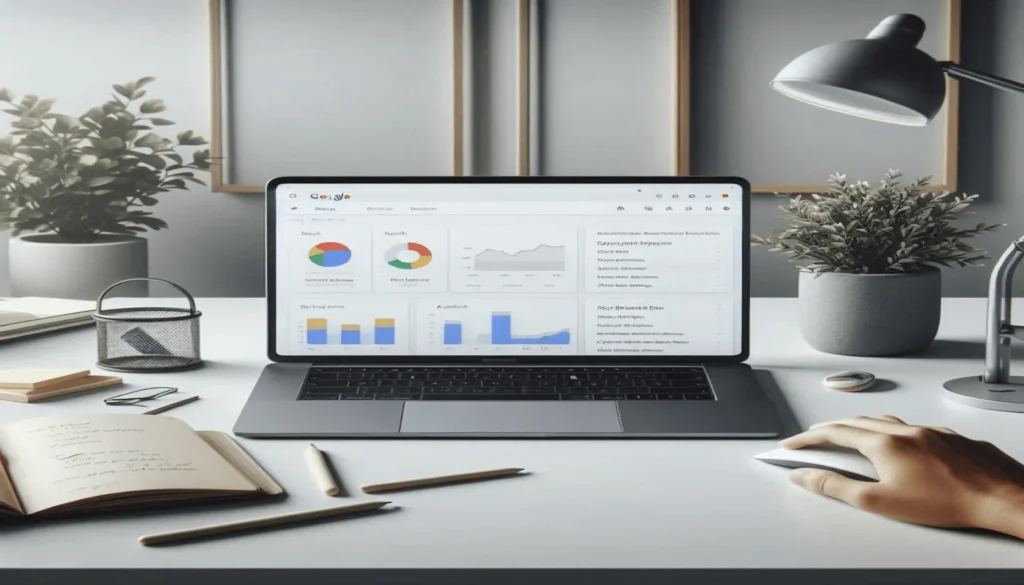
Understanding the mechanics behind Google Ads is crucial for advertisers looking to maximize their return on investment. At its core, Google Ads operates on an auction-based system, but it’s not just about who’s willing to pay the most. The platform incorporates several factors to ensure that users see relevant, high-quality ads while providing advertisers with a fair opportunity to reach their target audience.
The Auction-Based System Explained
Google Ads uses a real-time bidding system known as the Ad Auction. This process occurs every time a user performs a search on Google or visits a website that displays ads. Here’s a breakdown of how the auction works:
- Keyword Matching: When a user enters a search query, Google identifies ads with keywords that match the search terms.
- Ad Eligibility: Google determines which ads are eligible to appear based on factors such as targeting settings and approval status.
- Ad Rank Calculation: For each eligible ad, Google calculates an Ad Rank score using the following formula: Ad Rank = Bid Amount x Quality Score + Ad Extensions Impact
- Ad Placement: Ads are then placed in descending order based on their Ad Rank, with the highest-ranked ad appearing in the top position.
- Actual CPC Determination: The actual cost per click (CPC) an advertiser pays is determined by the Ad Rank of the next lower ad divided by their Quality Score, plus $0.01.
This system ensures that advertisers with relevant, high-quality ads can achieve prominent ad positions without necessarily being the highest bidder.
Google Ads Quality Score
Quality Score is a crucial metric in Google Ads that significantly influences both ad performance and cost. It’s essentially Google’s rating of the quality and relevance of your keywords, ads, and landing pages.
Factors Affecting Quality Score
Google considers several factors when calculating Quality Score:
- Expected Click-Through Rate (CTR): Google’s prediction of how likely your ad is to be clicked when shown for a specific keyword.
- Ad Relevance: How closely your ad matches the intent behind a user’s search.
- Landing Page Experience: The quality and relevance of your landing page to users who click your ad.
- Historical Account Performance: Your overall Google Ads account history and performance.
- Ad Format Impact: The expected impact of your ad format and extensions.
Here’s a table summarizing the impact of these factors on Quality Score:
| Factor | Impact on Quality Score |
| Expected CTR | High |
| Ad Relevance | High |
| Landing Page Experience | High |
| Historical Account Performance | Medium |
| Ad Format Impact | Low |
Benefits of a High Quality Score
Achieving a high Quality Score offers several advantages:
- Lower Costs: Higher Quality Scores typically result in lower CPCs.
- Better Ad Positioning: Ads with higher Quality Scores often achieve better ad positions.
- Increased Exposure: Your ads are more likely to be shown, leading to higher impression share.
- Improved ROI: Lower costs and better performance lead to a higher return on investment.
According to a study by Wordstream, ads with a Quality Score of 10 can see a 50% reduction in CPC compared to the average Quality Score of 5.
Improving Your Quality Score
To enhance your Quality Score, consider the following strategies:
- Improve Keyword Relevance: Organize your keywords into tightly themed ad groups.
- Craft Compelling Ad Copy: Write ads that are highly relevant to your keywords and include a clear call-to-action.
- Optimize Landing Pages: Ensure your landing pages are relevant, user-friendly, and provide a good user experience.
- Use Ad Extensions: Implement relevant ad extensions to provide more information and improve click-through rates.
- Monitor and Adjust: Regularly review your Quality Score and make necessary adjustments to your campaigns.
The Impact of Quality Score on Ad Performance and Cost
Quality Score has a profound impact on both the performance of your ads and the cost of your campaigns. Here’s how:
- Ad Positioning: A higher Quality Score can help your ads achieve better positions on the SERP, even if your bid is lower than competitors.
- Cost Per Click: Ads with higher Quality Scores often enjoy lower CPCs. Google rewards relevance and quality with more cost-effective advertising.
- Impression Share: Higher Quality Scores can lead to increased impression share, meaning your ads are shown more often for relevant searches.
- Overall Campaign Costs: By reducing your CPC and improving ad performance, a good Quality Score can significantly lower your overall campaign costs.
- Ad Eligibility: In some cases, keywords with very low Quality Scores may not be eligible to trigger ads at all, regardless of bid amount.
To illustrate the impact of Quality Score, consider this data from Google:
Improving your Quality Score from 5 to 7 could reduce your CPC by 28%, while a jump from 5 to 10 could lead to a 50% reduction in CPC.
Learn more about Quality Score on the Google Ads Help Center
Understanding and optimizing for Quality Score is crucial for any successful Google Ads campaign. By focusing on relevance, user experience, and ad quality, advertisers can improve their ad performance while simultaneously reducing costs, leading to more effective and efficient digital advertising efforts.
In the next section, we’ll explore the process of setting up your first Google Ads campaign, putting these principles into practice to create a strong foundation for your advertising efforts.
Setting Up Your First Google Ads Campaign
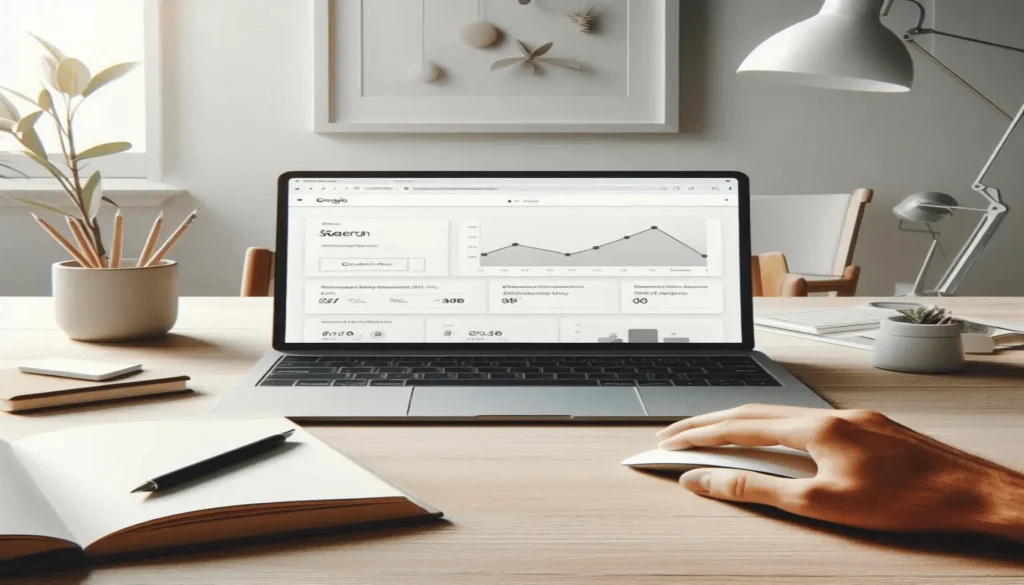
Embarking on your Google Ads journey can seem daunting, but with the right approach, you can launch a successful campaign that drives results for your business. This section will guide you through the essential steps of setting up your first Google Ads campaign, ensuring you start on the right foot in the world of digital advertising.
Creating a Google Ads Account
The first step in your Google Ads journey is creating an account. Here’s a step-by-step guide to get you started:
- Visit the Google Ads website
- Click on the “Start Now” button
- Enter your email address and website URL
- Choose your main advertising goal
- Set up your billing information
Pro Tip: If you already have a Google account (e.g., for Gmail or YouTube), you can use it to sign up for Google Ads, streamlining the process.
Defining Your Advertising Goals
Before diving into campaign creation, it’s crucial to define clear, measurable advertising goals. These objectives will guide your campaign structure, ad copy, and bidding strategy. Common advertising goals include:
- Increasing website traffic
- Generating leads
- Boosting sales or conversions
- Enhancing brand awareness
- Promoting app installs
To help you define SMART (Specific, Measurable, Achievable, Relevant, Time-bound) goals for your Google Ads campaigns, consider the following table:
| Goal Type | Example | Measurement Metric |
| Website Traffic | Increase website visitors by 50% in 3 months | Click-through rate (CTR), Number of clicks |
| Lead Generation | Generate 100 new leads per month | Conversion rate, Cost per lead |
| Sales | Increase online sales by 25% in Q4 | Return on Ad Spend (ROAS), Conversion value |
| Brand Awareness | Reach 1 million impressions in 6 months | Impressions, Reach |
| App Installs | Achieve 10,000 app installs in 2 months | Install rate, Cost per install |
Choosing the Right Campaign Type
Google Ads offers several campaign types, each designed to meet specific advertising objectives. Here’s an overview of the main campaign types:
- Search campaigns: Text ads that appear on Google’s SERP when users search for relevant keywords.
- Display campaigns: Visual ads shown on websites within the Google Display Network.
- Shopping campaigns: Product listings featuring images, prices, and merchant information.
- Video campaigns: Ads that run before or during YouTube videos.
- App campaigns: Promotions for mobile applications across Google’s properties.
When selecting a campaign type, consider your advertising goals, target audience, and the nature of your product or service. For instance, if you’re an e-commerce business looking to drive direct sales, a combination of Search and Shopping campaigns might be most effective.
Setting Your Budget and Bidding Strategy
Determining your budget and bidding strategy is crucial for managing your ad spend and achieving your advertising goals. Here are some key considerations:
- Daily Budget: Set a daily spending limit that aligns with your overall marketing budget. Google Ads allows you to adjust this at any time.
- Bidding Strategy: Choose a bidding strategy that aligns with your campaign objectives. Google Ads offers several options:
- Manual CPC (Cost Per Click): You set the maximum amount you’re willing to pay for each click.
- Automated bidding: Google’s algorithms optimize your bids to achieve specific goals (e.g., maximize clicks, target CPA, target ROAS).
- Quality Score: This is Google’s rating of the quality and relevance of your keywords and ads. A higher Quality Score can lead to lower costs and better ad positioning.
To illustrate the impact of Quality Score on your advertising costs, consider this data from Wordstream:
Advertisers with Quality Scores of 6 or higher enjoyed cost per click (CPC) discounts of up to 50%, while those with scores of 4 or lower paid premiums of up to 400%.
For beginners, starting with a manual CPC bidding strategy can provide more control and insight into how your campaigns perform. As you gain experience and data, you can experiment with automated bidding strategies to optimize your results further.
Learn more about bidding strategies on Google’s official support page
Remember, setting up your first Google Ads campaign is just the beginning. Continuous monitoring, testing, and optimization are key to long-term success in PPC advertising. In the next section, we’ll delve into the critical aspect of keyword research, which forms the foundation of effective Google Ads campaigns.
Keyword Research for Google Ads Success

Effective keyword research is the cornerstone of any successful Google Ads campaign. It’s the process of identifying the search terms your potential customers are using to find products or services like yours. By understanding and leveraging these keywords, you can create highly targeted ads that appear to the right audience at the right time. Let’s dive into the key aspects of keyword research for Google Ads.
Understanding Keyword Match Types
Google Ads offers several keyword match types, each determining how closely a user’s search query needs to match your chosen keywords for your ad to be eligible to appear. The main keyword match types are:
- Broad Match: The most flexible match type. Your ad may show for searches that include misspellings, synonyms, related searches, and other relevant variations.
- Phrase Match: Your ad can appear for searches that include your keyword phrase (or close variations) in the same order, with additional words before or after.
- Exact Match: The most specific match type. Your ad can show for searches that match the exact term or have the same meaning as your keyword.
- Broad Match Modifier: This match type was phased out in 2021, with its functionality being absorbed into Phrase Match.
Here’s a table illustrating how different match types work:
| Match Type | Keyword | Might show for | Won’t show for |
| Broad Match | women’s hats | buy ladies hats | women’s scarves |
| Phrase Match | “women’s hats” | buy women’s hats | hats for women |
| Exact Match | [women’s hats] | women’s hats | women’s sun hats |
Understanding and using the right match types can significantly improve your ad’s relevance and performance, leading to a higher Quality Score and lower Cost Per Click (CPC).
Using the Google Keyword Planner
The Google Keyword Planner is a free tool within Google Ads that helps you discover new keywords related to your business and see estimates of the searches they receive and the cost to target them.
Here’s how to make the most of the Keyword Planner:
- Discover new keywords: Enter words, phrases, or a URL related to your business to get keyword ideas.
- Get search volume and forecasts: See how many searches a keyword gets in your target location.
- Organize keywords: Group keywords into ad groups based on themes.
- Competitive analysis: See how competitive different keywords are in your industry.
Learn how to use the Google Keyword Planner effectively
Long-tail Keywords vs. Short-tail Keywords
Keywords are often categorized as either long-tail or short-tail:
- Short-tail keywords (also known as head terms) are typically one or two words long and have high search volume but also high competition. For example, “women’s hats”.
- Long-tail keywords are longer, more specific phrases that typically have lower search volume but also lower competition. For example, “vintage women’s sun hats for summer”.
While short-tail keywords can drive a lot of traffic, long-tail keywords often have higher conversion rates because they’re more specific to what the user is looking for. A balanced keyword strategy usually includes a mix of both types.
Consider this data from a study by Ahrefs:
Long-tail keywords (4+ words) make up 60.67% of all searches, while only 0.16% of keywords with over 1,000 monthly searches consist of a single word.
This highlights the importance of incorporating long-tail keywords into your Google Ads strategy.
Negative Keywords and Their Importance
Negative keywords are a powerful tool in your Google Ads arsenal. They prevent your ads from showing for searches that include those terms, helping you:
- Improve ad relevancy
- Reduce wasted spend
- Increase click-through rate (CTR)
- Boost overall campaign performance
For instance, if you sell high-end women’s hats, you might add “cheap” or “budget” as negative keywords to avoid showing your ads to users looking for inexpensive options.
To effectively use negative keywords:
- Regularly review your Search Terms report in Google Ads
- Add irrelevant terms as negative keywords
- Use negative keyword lists for efficiency across campaigns
- Consider different match types for negative keywords too
Learn more about using negative keywords effectively
By mastering these aspects of keyword research, you’ll be well-equipped to create highly targeted, cost-effective Google Ads campaigns. Remember, keyword research is an ongoing process. Regularly reviewing and refining your keyword strategy is crucial for maintaining and improving your campaign’s performance over time.
In the next section, we’ll explore how to craft compelling ad copy that leverages your carefully researched keywords to drive clicks and conversions.
Crafting Compelling Ad Copy

In the realm of Google Ads, your ad copy serves as the frontline of your digital advertising efforts. It’s the first impression potential customers have of your brand, and it can make or break your campaign’s success. Mastering the art of crafting compelling ad copy is crucial for achieving high click-through rates (CTR), improving your Quality Score, and ultimately driving conversions.
Elements of a Google Search Ad
Before diving into best practices, let’s break down the anatomy of a Google search ad:
- Headlines: Up to three 30-character headlines that appear at the top of your ad.
- Description: Two 90-character description lines that provide more details about your offer.
- Display URL: The web address that appears in your ad, which can include up to two 15-character paths.
- Ad Extensions: Additional information such as site links, callouts, or structured snippets that can enhance your ad’s visibility and functionality.
Here’s a visual representation of these elements:
Headline 1 | Headline 2 | Headline 3
www.example.com/path1/path2
Description line 1
Description line 2
Extension 1 | Extension 2 | Extension 3
Each of these elements plays a crucial role in capturing attention and conveying your message effectively within the limited space provided.
Best Practices for Writing Effective Ad Copy
- Focus on Benefits: Highlight what sets your product or service apart. Instead of simply listing features, explain how they solve the user’s problem or improve their life.
- Use Strong Call-to-Actions (CTAs): Encourage users to take action with powerful verbs like “Discover,” “Shop Now,” “Learn More,” or “Get Started.”
- Include Keywords: Incorporate your target keywords naturally into your headlines and descriptions. This improves ad relevance and can boost your Quality Score.
- Create Urgency: Use phrases like “Limited Time Offer” or “While Supplies Last” to motivate immediate action.
- Leverage Numbers and Statistics: Quantifiable data can make your ads more compelling and credible. For example, “Save Up to 50%” or “Join 10,000+ Satisfied Customers.”
- Address User Intent: Align your ad copy with the searcher’s intent. Are they looking to buy, learn, or compare? Tailor your message accordingly.
- Highlight Unique Selling Propositions (USPs): Showcase what makes your offer unique, such as “Free Shipping” or “24/7 Customer Support.”
- Use Ad Extensions: Utilize all relevant ad extensions to provide additional information and increase your ad’s real estate on the SERP.
- Be Specific: Use concrete language and avoid vague statements. Instead of “Great Deals,” try “Save 30% on Summer Styles.”
- Maintain Consistency: Ensure your ad copy aligns with your landing page content to meet user expectations and improve Quality Score.
Here’s an example of how these best practices can be applied:
Original Ad:
Buy Shoes Online | Great Selection
www.example.com
Shop for shoes. Many styles available.
Free shipping on orders.
Improved Ad:
50% Off Running Shoes | Free 2-Day Shipping
www.example.com/Running-Shoes
Premium running shoes for all levels. 30-day returns.
Shop now & save up to 50% on top brands!
Size Guide | Customer Reviews | Store Locator
A/B Testing Your Ads
A/B testing, also known as split testing, is a crucial practice for optimizing your ad performance. It involves creating multiple versions of your ads and comparing their performance to identify the most effective elements.
Here’s how to conduct effective A/B tests for your Google Ads:
- Test One Variable at a Time: Isolate a single element (e.g., headline, CTA, or description) to understand its impact clearly.
- Create Significant Variations: Ensure the differences between your ad versions are substantial enough to yield meaningful insights.
- Run Tests for Adequate Duration: Allow your ads to run for at least two weeks or until they’ve received a statistically significant number of impressions.
- Use Ad Rotation Settings: Set your ad rotation to “Do not optimize: Rotate ads indefinitely” to ensure equal exposure for all variants.
- Analyze Key Metrics: Focus on metrics like CTR, conversion rate, and cost per conversion to determine the winning ad.
- Implement and Iterate: Apply the insights from your tests to create new, improved versions of your ads, and continue testing.
Consider this example of an A/B test focusing on the headline:
Version A:
“Save 30% on Running Shoes”
Version B:
“Premium Running Shoes for Less”
After running this test, you might find that Version A has a higher CTR, suggesting that users respond better to specific discount information in the headline.
Learn more about creating effective text ads on Google’s Ads Help Center
By consistently applying these best practices and rigorously testing your ad copy, you can significantly improve your ad performance, boost your Quality Score, and achieve better ad positioning on the SERP. Remember, crafting compelling ad copy is an ongoing process of refinement and optimization. Stay attuned to your audience’s needs and preferences, and be prepared to adapt your messaging as market conditions and consumer behaviors evolve.
Targeting the Right Audience

One of the most powerful features of Google Ads is its ability to deliver your message to the right people at the right time. Precise targeting is crucial for maximizing your advertising ROI and ensuring that your ad spend is directed towards users most likely to convert. In this section, we’ll explore the various targeting options available in Google Ads and how to leverage them effectively.
Geographic Targeting Options
Geographic targeting, also known as geo-targeting, allows advertisers to show their ads to users in specific locations. This feature is particularly valuable for businesses with physical locations or those offering services in specific areas.
Google Ads offers several geographic targeting options:
- Countries: Target entire countries or multiple countries.
- Regions or states: Focus on specific regions within a country.
- Cities: Target individual cities or metropolitan areas.
- Radius targeting: Show ads to users within a certain distance from a specific location.
- ZIP codes: Target specific postal codes (available in some countries).
Pro tip: Use the Location report in Google Ads to see how your ads perform in different locations. This data can help you refine your targeting strategy and allocate your budget more effectively.
Demographic Targeting
Demographic targeting allows you to reach users based on specific personal characteristics. This targeting option can be particularly effective when combined with other targeting methods to create a more defined audience profile.
Google Ads offers the following demographic targeting options:
- Age: Target users within specific age ranges.
- Gender: Show ads to users of a particular gender.
- Parental status: Reach parents or non-parents.
- Household income: Target users based on their approximate household income (available in select countries).
It’s important to note that demographic targeting may not be available for all ad types and may have limitations in certain countries due to privacy regulations.
Audience Targeting
Audience targeting in Google Ads allows you to reach users based on their interests, behaviors, and other characteristics. This targeting method can significantly improve your ad relevance and performance.
Here are the main types of audience targeting available:
- Affinity audiences: Reach users based on their long-term interests and habits.
- In-market audiences: Target users who are actively researching or planning to purchase products or services in specific categories.
- Custom intent audiences: Create your own audiences based on keywords, URLs, and apps related to your products or services.
- Life events: Target users going through significant life changes, such as graduating, moving, or getting married.
- Similar audiences: Reach new users with similar characteristics to your existing customers.
To illustrate the power of audience targeting, consider this case study:
A luxury watch brand used in-market audience targeting to reach users actively researching high-end watches. By combining this with demographic targeting (focusing on high-income individuals aged 35-65), they saw a 45% increase in conversion rate and a 28% decrease in cost per acquisition compared to their previous campaigns.
Learn more about audience targeting options on the Google Ads Help Center
Remarketing with Google Ads
Remarketing is a powerful targeting strategy that allows you to show ads to users who have previously interacted with your website or mobile app. This technique can significantly boost your conversion rates by re-engaging users who have already shown interest in your products or services.
Google Ads offers several types of remarketing:
- Standard remarketing: Show ads to past visitors as they browse websites and apps on the Google Display Network.
- Dynamic remarketing: Display ads featuring specific products or services that users viewed on your site.
- Remarketing lists for search ads (RLSA): Adjust your search ad bids for past visitors when they’re searching on Google.
- Video remarketing: Show ads to people who have interacted with your videos or YouTube channel.
- Customer list remarketing: Upload lists of contact information from your customers to show them ads across Google properties.
Here’s a table summarizing the benefits and considerations of each remarketing type:
| Remarketing Type | Benefits | Considerations |
| Standard remarketing | Broad reach, cost-effective | May have lower relevance compared to other types |
| Dynamic remarketing | Highly personalized, potentially higher conversion rates | Requires product feed setup |
| RLSA | Targets high-intent users, can be combined with other targeting methods | Limited to search ads |
| Video remarketing | Engages users across YouTube and video partner sites | Requires video content |
| Customer list remarketing | Reaches known customers across devices | Requires customer data, subject to privacy policies |
To set up effective remarketing campaigns:
- Install the Google Ads remarketing tag on your website.
- Create remarketing lists based on specific pages visited or actions taken.
- Set appropriate membership durations for your lists (e.g., 30 days for a short sales cycle, 540 days for longer consideration periods).
- Create targeted ads that speak to the specific interests or behaviors of your remarketing audience.
- Monitor performance and adjust your strategy accordingly.
Pro tip: Use frequency capping to limit the number of times your ads are shown to the same user, preventing ad fatigue and potential negative brand perception.
By leveraging these targeting options effectively, you can significantly improve the performance of your Google Ads campaigns, reaching the right users with the right message at the right time. Remember to continuously test and refine your targeting strategies to achieve optimal results.
Explore advanced remarketing strategies on the Google Ads Help Center
In the next section, we’ll delve into Google Ads bidding strategies and how to choose the right approach for your campaign objectives.
Google Ads Bidding Strategies

One of the most crucial aspects of running successful Google Ads campaigns is selecting the right bidding strategy. Your bidding strategy determines how you’ll pay for user interactions with your ads and plays a significant role in your campaign’s performance and ROI. In this section, we’ll explore the various bidding options available in Google Ads, helping you make informed decisions to optimize your advertising efforts.
Manual CPC Bidding
Manual Cost-Per-Click (CPC) bidding is the most hands-on approach to managing your Google Ads bids. With this strategy, you set the maximum amount you’re willing to pay for each click on your ad. This method offers the highest level of control but requires more time and attention to manage effectively.
Key features of Manual CPC bidding:
- Full control over bids at the keyword level
- Ability to adjust bids based on performance data
- Requires regular monitoring and optimization
- Ideal for experienced advertisers who want granular control
To succeed with Manual CPC bidding, it’s crucial to regularly review your keyword performance and adjust your bids accordingly. This might involve increasing bids for high-performing keywords or reducing bids for underperforming ones.
Pro tip: Use the Google Ads Keyword Planner to research keyword competition and suggested bid amounts.
Automated Bidding Options
Google Ads offers a range of automated bidding strategies that leverage machine learning to optimize your bids based on your campaign goals. These strategies can save time and potentially improve performance by making real-time bid adjustments.
Here’s a table summarizing the main automated bidding strategies:
| Strategy | Goal | Best For |
| Target CPA | Maximize conversions at a target cost per acquisition | Advertisers focused on conversions with a specific CPA goal |
| Target ROAS | Achieve a target return on ad spend | E-commerce businesses with clear revenue data |
| Maximize Conversions | Get the most conversions within your budget | Advertisers wanting to drive as many conversions as possible |
| Maximize Clicks | Get the most clicks within your budget | Campaigns focused on driving traffic |
| Enhanced CPC | Automatically adjust manual bids to maximize conversions | A hybrid approach for those transitioning from manual to automated bidding |
Each of these strategies uses Google’s machine learning algorithms to analyze vast amounts of data and make bid adjustments in real-time, aiming to achieve your specified goals.
Choosing the Right Bidding Strategy for Your Goals
Selecting the optimal bidding strategy depends on various factors, including your campaign objectives, budget, and the level of control you desire. Here are some guidelines to help you choose:
- Define your primary objective: Are you aiming for more traffic, conversions, or specific ROAS targets?
- Consider your budget: Some automated strategies require a sufficient budget to gather enough data for optimization.
- Evaluate your experience level: If you’re new to Google Ads, automated bidding can be a good starting point.
- Assess your time commitment: Manual bidding requires more time and attention than automated strategies.
- Analyze your data: Look at your historical performance data to inform your strategy choice.
Here’s a decision tree to help guide your bidding strategy selection:
graph TD
A[Start] –> B{Primary Goal?}
B –>|Traffic| C[Maximize Clicks]
B –>|Conversions| D{Specific CPA Target?}
B –>|ROAS| E[Target ROAS]
D –>|Yes| F[Target CPA]
D –>|No| G[Maximize Conversions]
C –> H{Enough Time for Management?}
F –> H
G –> H
E –> H
H –>|Yes| I[Consider Manual CPC]
H –>|No| J[Stick with Automated]
Remember, there’s no one-size-fits-all approach to bidding strategies. It’s often beneficial to test different strategies and compare their performance over time.
The key to success in Google Ads is not just choosing the right bidding strategy, but continuously testing and refining your approach based on data-driven insights.
Neil Patel, Digital Marketing Expert
To gain deeper insights into your bidding performance, consider using the Google Ads Performance Grader. This free tool analyzes your account and provides actionable recommendations for improvement, including suggestions for optimizing your bidding strategy.
Try the Google Ads Performance Grader
By understanding and effectively utilizing Google Ads bidding strategies, you can significantly improve your campaign’s performance, achieve better ad positioning, and ultimately drive more value from your advertising spend. In the next section, we’ll explore how to leverage Google Ads extensions to enhance your ad’s visibility and effectiveness on the SERP.
Google Ads Extensions: Boosting Ad Performance and User Engagement

Google Ads extensions are powerful tools that can significantly enhance the visibility and effectiveness of your digital advertising campaigns. These additional snippets of information expand your ads, providing more real estate on the search engine results page (SERP) and offering potential customers additional ways to interact with your business. In this section, we’ll explore the various types of ad extensions, best practices for their implementation, and their impact on overall ad performance.
Types of Ad Extensions
Google Ads offers a diverse range of extensions to suit different advertising goals and business types. Here are some of the most popular and effective ad extensions:
- Sitelink Extensions: These allow you to add extra links to specific pages on your website beneath your main ad text. Sitelinks can direct users to product pages, special offers, or contact information.
- Callout Extensions: Short, descriptive text snippets that highlight unique selling points or special offers (e.g., “Free Shipping,” “24/7 Customer Support”).
- Structured Snippet Extensions: Showcase specific aspects of your products or services in a list format (e.g., product categories, service types).
- Call Extensions: Add a clickable phone number to your ad, making it easy for mobile users to call your business directly.
- Location Extensions: Display your business address, a map to your location, or the distance to your business from the user.
- Price Extensions: Showcase your products or services along with their prices directly in the ad.
- App Extensions: Encourage users to download your mobile app with a direct link to the app store.
- Lead Form Extensions: Allow users to submit their contact information directly through the ad without leaving the SERP.
Each of these extensions serves a specific purpose and can be strategically employed to enhance your ad performance and improve your quality score.
Best Practices for Using Ad Extensions
To maximize the impact of ad extensions on your Google advertising campaigns, consider the following best practices:
- Use Multiple Extensions: Combine different types of extensions to provide comprehensive information and increase your ad’s real estate on the SERP.
- Align Extensions with Campaign Goals: Choose extensions that support your primary advertising objectives. For example, if you’re focusing on driving phone calls, prioritize call extensions.
- Keep Information Up-to-Date: Regularly review and update your extensions, especially for time-sensitive information like prices or special offers.
- Create Mobile-Specific Extensions: Optimize your extensions for mobile users, considering their unique needs and behaviors.
- A/B Test Your Extensions: Experiment with different combinations and formats to identify what resonates best with your audience.
- Use Schedule Extensions: Set specific times for your extensions to appear, aligning them with business hours or promotional periods.
- Leverage Location-Based Extensions: If you have a physical store or service area, use location extensions to attract nearby customers.
- Monitor Performance: Regularly review the performance of your extensions using Google Ads analytics and adjust your strategy accordingly.
Impact of Extensions on Ad Performance
The implementation of ad extensions can have a significant positive impact on your overall ad performance. Here’s how extensions can boost your advertising efforts:
- Increased Click-Through Rate (CTR): By providing more information and clickable elements, extensions typically lead to higher CTRs. According to Google, ads with extensions see an average CTR increase of 10-15%.
- Improved Ad Rank: Extensions are a factor in determining your ad rank. Well-implemented extensions can boost your rank, potentially leading to better ad positioning and lower costs.
- Enhanced Quality Score: Relevant extensions that provide value to users can contribute to a higher quality score, which in turn can lower your cost per click (CPC).
- Better Ad Relevance: Extensions allow you to provide more specific information, making your ads more relevant to users’ search queries.
- Increased Conversion Rates: By offering multiple ways for users to interact with your business (e.g., calling directly, visiting specific landing pages), extensions can lead to higher conversion rates.
- Improved ROI: The combination of higher CTRs, better ad positioning, and increased conversions often results in an improved return on investment for your PPC campaigns.
To illustrate the potential impact of ad extensions, consider this case study from Google:
An online retailer implemented shopping ads with price extensions for their holiday campaign. The result was a 20% increase in CTR and a 30% boost in conversions compared to their standard text ads without extensions.
Learn more about ad extensions and their implementation on the Google Ads Help Center
To further emphasize the importance of ad extensions, let’s look at a comparison of ad performance with and without extensions:
| Metric | Without Extensions | With Extensions | Improvement |
| Click-Through Rate | 2.5% | 3.25% | +30% |
| Average Ad Position | 3.2 | 2.8 | +14% |
| Conversion Rate | 3.8% | 4.75% | +25% |
| Cost Per Conversion | $28.50 | $24.22 | -15% |
As the table demonstrates, the strategic use of ad extensions can lead to significant improvements across key performance metrics.
In conclusion, ad extensions are a vital component of successful Google Ads campaigns. By providing additional, relevant information to potential customers and increasing your ad’s visibility on the SERP, extensions can dramatically improve your ad performance, boost your quality score, and ultimately drive better results for your digital advertising efforts. As you continue to refine your Google Ads strategy, make sure to experiment with different extension types and combinations to find what works best for your specific business goals and target audience.
Google Ads Costs: Understanding and Optimizing Your Ad Spend
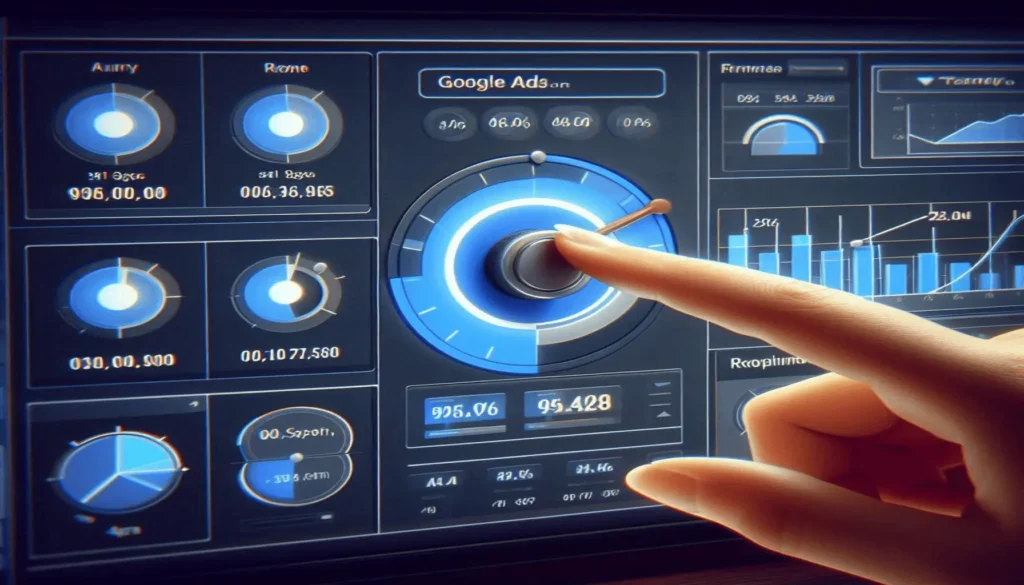
One of the most critical aspects of running successful Google Ads campaigns is understanding and managing your advertising costs. The platform operates on a pay-per-click (PPC) model, which offers both flexibility and control over your ad spend. In this section, we’ll delve into the intricacies of Google Ads costs, explore the factors that influence them, and provide strategies for effective budget management.
Understanding the Pay-Per-Click (PPC) Model
The PPC model is the foundation of Google Ads’ pricing structure. Here’s how it works:
- Advertisers only pay when a user clicks on their ad: This means you’re not charged for ad impressions (views) but for actual user engagement.
- Bid-based system: Advertisers set bids for keywords or placements, competing in real-time auctions for ad positions.
- Cost Per Click (CPC): The actual amount you pay for each click can vary based on several factors, often being lower than your maximum bid.
This model offers several advantages:
- Cost-effective: You only pay for potential leads or customers who show interest by clicking your ad.
- Budget control: Set daily or monthly budgets to cap your spending.
- Performance-based: Directly tie your ad spend to measurable actions.
Learn more about the PPC model on Google’s official support page
Factors Influencing Google Ads Costs
Several key factors impact the cost of your Google Ads campaigns:
- Keywords: The competitiveness and search volume of your chosen keywords significantly affect costs. High-value keywords in competitive industries can command higher CPCs.
- Quality Score (6): This metric, ranging from 1-10, assesses the quality and relevance of your ads, keywords, and landing pages. A higher Quality Score can lead to lower costs and better ad positions.
- Ad Rank (2): Determined by your bid amount, Quality Score, and the expected impact of ad extensions, Ad Rank influences both your ad position and CPC.
- Industry: Some industries, like insurance or legal services, typically have higher CPCs due to increased competition and higher customer lifetime values.
- Geographic targeting: Costs can vary based on the locations you’re targeting, with more competitive markets often having higher CPCs.
- Device targeting: Mobile, desktop, and tablet users may have different CPCs based on user behavior and competition.
- Time of day and seasonality: Costs can fluctuate based on when your ads are shown and seasonal trends in your industry.
Here’s a table illustrating average CPCs across different industries:
| Industry | Average CPC |
| Legal | $6.75 |
| Insurance | $5.41 |
| Online Education | $2.40 |
| Marketing & Advertising | $2.37 |
| E-commerce | $1.16 |
| Travel & Hospitality | $1.53 |
Source: WordStream
Understanding the potential costs and returns of your Google Ads campaigns is crucial for making informed decisions. While costs can vary widely depending on your industry, target keywords, and competition, you can use the calculator below to estimate your potential ROI based on your specific metrics.
Google Ads ROI Calculator
This calculator provides a simplified estimate of your potential Google Ads performance. Keep in mind that actual results may vary based on factors such as ad quality, landing page experience, and market conditions. Use this as a starting point to set realistic expectations and goals for your campaigns.
Key factors influencing your Google Ads costs include:
- Your chosen keywords and their competitiveness
- Your Quality Score
- Your bidding strategy
- The match types you use
- Your targeting settings
Remember, while it’s important to keep an eye on costs, focusing solely on reducing spend can limit your potential results. Instead, aim to optimize your campaigns for the best possible ROI by improving your ads, landing pages, and overall strategy.
Strategies for Managing Your Google Ads Budget
Effective budget management is crucial for maximizing your ROI in Google advertising . Here are some strategies to optimize your ad spend:
- Start small and scale: Begin with a modest budget to test and refine your campaigns before increasing your investment.
- Use bid adjustments: Modify bids based on devices, locations, times, and audience segments to allocate budget more effectively.
- Implement ad scheduling: Show your ads during times when they’re most likely to perform well, potentially reducing wasted spend.
- Utilize negative keywords: Exclude irrelevant search terms to prevent your ads from showing for unrelated queries, saving your budget for more relevant clicks.
- Focus on Quality Score improvement: Enhance your ad relevance, landing page experience, and expected CTR to potentially lower your CPC.
- Leverage automated bidding strategies: Use Google’s machine learning-powered bidding strategies like Target CPA or Maximize Conversions to optimize your bids automatically.
- Monitor and adjust regularly: Use the Google Ads Performance Grader and built-in analytics to track your campaign performance and make data-driven adjustments.
- Experiment with different ad formats: Test various ad types like search ads , display ads , and shopping ads to find the most cost-effective options for your business.
- Implement conversion tracking : Accurately measure the value of your ad clicks to inform your bidding decisions and budget allocation.
- Consider audience targeting : Use remarketing and similar audiences to focus your budget on users more likely to convert.
The key to managing Google Ads costs effectively is to continually test, measure, and refine your campaigns. It’s not just about spending less, but about spending smarter.
Neil Patel, Digital Marketing Expert
By understanding the PPC model, recognizing the factors that influence costs, and implementing these strategies, you can effectively manage your Google Ads budget to achieve optimal results. Remember, the goal is not necessarily to minimize costs, but to maximize the return on your advertising investment.
Explore more advanced budget optimization techniques on the Google Ads Help Center
In the next section, we’ll dive into tracking and measuring Google Ads performance, providing you with the tools to assess the effectiveness of your campaigns and make data-driven decisions to improve your ad performance.
Tracking and Measuring Google Ads Performance

In the world of digital advertising, the ability to track and measure performance is paramount. Google Ads provides a robust suite of tools and metrics that enable advertisers to gauge the effectiveness of their campaigns, make data-driven decisions, and optimize for better results. In this section, we’ll explore the critical aspects of tracking and measuring Google Ads performance, ensuring you’re equipped to maximize your ROI and drive meaningful business outcomes.
Setting up Conversion Tracking
Conversion tracking is the cornerstone of measuring Google Ads performance. It allows you to track specific actions that users take after interacting with your ads, such as making a purchase, signing up for a newsletter, or downloading an app. Setting up conversion tracking is crucial for understanding the true value of your advertising efforts.
To set up conversion tracking:
- Sign in to your Google Ads account
- Click on “Tools & Settings” in the upper right corner
- Under “Measurement,” select “Conversions”
- Click the blue “+” button to add a new conversion action
- Choose the type of conversion you want to track (e.g., website, app, phone calls)
- Follow the prompts to set up the conversion action
For website conversions, you’ll need to add a snippet of code to your website. Google provides several options for implementing this code, including:
- Global site tag (gtag.js)
- Google Tag Manager
- Google Analytics integration
It’s important to note that with the phasing out of third-party cookies, Google has introduced enhanced conversions, which use consented, first-party data to give you a more accurate view of your conversions while respecting user privacy.
Learn more about setting up conversion tracking in Google Ads
Key Performance Indicators (KPIs) to Monitor
To effectively measure the success of your Google Ads campaigns, you need to focus on the right metrics. Here are some essential KPIs to monitor:
- Click-Through Rate (CTR): The percentage of people who click on your ad after seeing it. A higher CTR indicates that your ad is relevant and compelling.
- Conversion Rate: The percentage of clicks that result in a desired action (conversion). This metric helps you understand how effective your landing pages and offers are.
- Cost Per Click (CPC): The average amount you pay for each click on your ad. Monitoring CPC helps you manage your budget effectively.
- Cost Per Conversion: The average cost of acquiring a conversion. This metric is crucial for understanding the profitability of your campaigns.
- Quality Score: A rating of the quality and relevance of your keywords and PPC ads. A higher Quality Score can lead to lower costs and better ad positioning.
- Impression Share: The percentage of impressions your ads receive compared to the total number of impressions they’re eligible to receive.
- Return on Ad Spend (ROAS): The revenue generated for every dollar spent on advertising.
Here’s a table summarizing these KPIs and their importance:
| KPI | Description | Why It’s Important |
| Click-Through Rate (CTR) | Percentage of ad views resulting in clicks | Indicates ad relevance and appeal |
| Conversion Rate | Percentage of clicks resulting in conversions | Measures effectiveness of landing pages and offers |
| Cost Per Click (CPC) | Average cost for each ad click | Helps manage budget and assess keyword competitiveness |
| Cost Per Conversion | Average cost to acquire a conversion | Determines campaign profitability |
| Quality Score | Rating of keyword and ad quality/relevance | Affects ad position and costs |
| Impression Share | Percentage of potential impressions received | Shows market share and growth opportunities |
| Return on Ad Spend (ROAS) | Revenue generated per dollar spent | Measures overall campaign profitability |
Read also : Guide to marketing KPIS : Unlock Marketing Growth
Using Google Analytics with Google Ads
Integrating Google Analytics with Google Ads provides a more comprehensive view of your advertising performance. This integration allows you to:
- See Google Ads click and cost data alongside your website performance metrics
- Import Analytics goals and transactions into Google Ads as conversions
- Create remarketing lists based on user behavior on your website
- Access enhanced ecommerce data for deeper insights into shopping behavior
To link your Google Analytics and Google Ads accounts:
- Sign in to your Google Ads account
- Click on “Tools & Settings” > “Linked accounts”
- Find Google Analytics and click “Details”
- Click the “Link” button next to the property you want to link
- Choose the settings you want to apply and click “Link accounts”
Learn more about linking Google Analytics and Google Ads
Creating Custom Reports and Dashboards
Custom reports and dashboards in Google Ads allow you to visualize and analyze your data in ways that are most relevant to your business objectives. Here’s how to create them:
Custom Reports:
- In Google Ads, click “Reports” in the upper right corner
- Click “Custom” and then “+Custom Report”
- Choose the type of report you want to create
- Select the metrics and dimensions you want to include
- Apply any filters or segments as needed
- Save your report
Dashboards:
- In Google Ads, click “Reports” > “Dashboards”
- Click “+Dashboard” to create a new dashboard
- Add cards to your dashboard by selecting from predefined reports or creating custom ones
- Arrange and resize cards as desired
- Save your dashboard
Pro Tip: Use the Google Ads Performance Grader to get a comprehensive audit of your account and identify areas for improvement. This free tool analyzes your account across multiple metrics and provides actionable insights to enhance your performance.
Try the Google Ads Performance Grader
By mastering these tracking and measurement techniques, you’ll be well-equipped to optimize your Google Ads campaigns for maximum performance. Remember, the key to success in digital advertising is continuous testing, learning, and refining based on data-driven insights.
The Google Ads Performance Grader

In the ever-evolving landscape of digital advertising, staying ahead of the competition requires constant optimization and fine-tuning of your Google Ads campaigns. Enter the Google Ads Performance Grader, a free and powerful tool designed to help advertisers evaluate and improve their ad strategies. This section will explore how this invaluable resource can revolutionize your approach to Google Ads management.
Introduction to the Free Google Ads Audit Tool
The Google Ads Performance Grader, developed by WordStream, is a comprehensive analysis tool that provides advertisers with a detailed assessment of their Google Ads account performance. This free Google Ads audit tool offers insights that can be instrumental in enhancing your advertising campaigns and maximizing your return on investment (ROI).
Key features of the Google Ads Performance Grader include:
- Comprehensive account analysis
- Benchmarking against industry standards
- Actionable recommendations for improvement
- Performance tracking over time
By leveraging this tool, advertisers can gain a deeper understanding of their account’s strengths and weaknesses, identify areas for optimization, and make data-driven decisions to improve their overall ad performance.
How to Use the Performance Grader
Using the Google Ads Performance Grader is a straightforward process that can yield powerful insights. Here’s a step-by-step guide to getting started:
- Visit the Google Ads Performance Grader website: Navigate to the official WordStream website to access the tool.
- Connect your Google Ads account: You’ll need to grant the tool permission to access your Google Ads data. Rest assured, this process is secure and your information remains confidential.
- Wait for the analysis: The tool will analyze your account, comparing it against billions of dollars in aggregate spend across WordStream’s client base.
- Review your report: Once the analysis is complete, you’ll receive a comprehensive report detailing your account’s performance across various metrics.
- Implement recommendations: Use the insights provided to make informed decisions about your Google Ads strategy.
It’s recommended to run the Performance Grader regularly, ideally once a quarter, to track your progress and identify new opportunities for improvement.
Interpreting Results and Implementing Improvements
The Google Ads Performance Grader provides a wealth of information, but the key lies in interpreting these results and translating them into actionable strategies. Here’s a breakdown of the main areas covered in the report and how to leverage this information:
- Quality Score
- The report assesses your account’s overall Quality Score, a critical factor in determining ad positioning and Cost Per Click (CPC).
- If your Quality Score is low, focus on improving ad relevance, landing page experience, and expected click-through rate (CTR).
- Wasted Spend
- This section identifies areas where your budget might be used inefficiently.
- Look for opportunities to pause underperforming keywords or add negative keywords to reduce wasted spend.
- Account Activity
- Regular account maintenance is crucial for optimal performance.
- If the grader suggests your account is undermanaged, consider increasing the frequency of your optimization efforts.
- Click-Through Rate (CTR)
- A high CTR indicates that your ads are relevant and compelling to your target audience.
- If your CTR is below industry standards, focus on improving ad copy and ensuring tight keyword-to-ad relevance.
- Use of Ad Extensions
- Ad extensions can significantly improve your ad’s visibility and performance.
- If you’re not fully utilizing extensions, consider implementing sitelinks, callouts, and structured snippets to enhance your ads.
- Landing Page Optimization
- The quality of your landing pages directly impacts your Quality Score and conversion rates.
- Pay attention to suggestions for improving landing page relevance and user experience.
Here’s a table summarizing key metrics and their impact on your Google Ads performance:
| Metric | Impact | Improvement Strategy |
| Quality Score | Affects ad positioning and CPC | Improve ad relevance and landing page experience |
| CTR | Indicates ad relevance | Refine ad copy and keyword targeting |
| Wasted Spend | Reduces ROI | Implement negative keywords and pause underperforming ads |
| Ad Extensions | Enhances ad visibility | Utilize all relevant extension types |
| Landing Page Quality | Influences conversion rates | Optimize for relevance and user experience |
To make the most of the Google Ads Performance Grader, consider the following best practices:
- Prioritize improvements: Focus on areas with the lowest scores or those that align most closely with your primary business objectives.
- Set benchmarks: Use the initial report as a baseline and track your progress over time.
- Implement changes gradually: Make incremental changes and monitor their impact before moving on to the next optimization.
- Combine with other tools: Use the insights from the Performance Grader in conjunction with Google Ads’ built-in tools and third-party analytics for a comprehensive optimization strategy.
The Google Ads Performance Grader has been instrumental in helping us identify areas for improvement in our campaigns. By implementing the tool’s recommendations, we’ve seen a 25% increase in CTR and a 15% reduction in CPC over three months.
Sarah Johnson, Digital Marketing Manager at TechStart Inc.
By leveraging the insights provided by the Google Ads Performance Grader, advertisers can make data-driven decisions to optimize their campaigns, improve their Quality Score, and ultimately achieve better results from their Google Ads investments. Regular use of this tool, combined with ongoing optimization efforts, can help ensure your Google Ads strategy remains competitive and effective in the dynamic world of digital advertising.
Advanced Google Ads Techniques

As you become more proficient with Google Ads, exploring advanced techniques can significantly enhance your campaign performance and efficiency. These sophisticated strategies leverage Google’s machine learning capabilities and automation tools to deliver more targeted, dynamic, and personalized ad experiences. Let’s dive into some of the most powerful advanced Google Ads techniques that can take your digital advertising to the next level.
Dynamic Search Ads
Dynamic Search Ads (DSA) represent a revolutionary approach to search advertising. Instead of manually creating ads for each product or service, DSAs automatically generate headlines and landing pages based on your website’s content. This technique is particularly valuable for businesses with large inventories or frequently changing offerings.
Key benefits of Dynamic Search Ads include:
- Time-saving: Automatically creates ads for your entire website without the need for extensive keyword lists.
- Increased reach: Captures relevant searches you might have missed with traditional keyword targeting.
- Fresh content: Keeps ads up-to-date with your latest offerings without manual intervention.
- Improved relevance: Matches user queries more closely, potentially increasing click-through rates (CTR) and Quality Scores.
To implement DSAs effectively:
- Ensure your website content is well-organized and up-to-date.
- Use negative keywords to prevent ads from showing for irrelevant queries.
- Monitor performance closely and adjust your targeting as needed.
Learn more about Dynamic Search Ads on Google’s official support page
Responsive Search Ads
Responsive Search Ads (RSAs) represent the future of Google search ads. This ad format allows advertisers to input multiple headlines and descriptions, which Google’s AI then combines and tests to find the most effective combinations for each user and search query.
Benefits of Responsive Search Ads:
- Increased ad relevance: Adapts to match user intent more closely.
- Improved performance: Typically sees higher click-through rates and conversions compared to standard text ads.
- Time-efficient: Reduces the need for manual A/B testing of ad copy.
- Broader reach: Can appear in more auctions due to the variety of ad combinations.
To maximize the effectiveness of RSAs:
- Provide a diverse range of headlines and descriptions (up to 15 headlines and 4 descriptions).
- Include your target keywords in at least 2-3 headlines.
- Ensure each headline can work independently and in combination with others.
- Use ad customizers and IF functions for even more personalization.
Here’s a table comparing standard text ads to Responsive Search Ads:
| Feature | Standard Text Ads | Responsive Search Ads |
| Headlines | 3 (fixed) | Up to 15 (dynamic) |
| Descriptions | 2 (fixed) | Up to 4 (dynamic) |
| Ad combinations | 1 | Thousands |
| AI optimization | No | Yes |
| Performance tracking | Per ad | Per asset |
Explore Responsive Search Ads in more detail on the Google Ads Help Center
Google Ads Scripts for Automation
Google Ads scripts are a powerful tool for automating routine tasks, implementing advanced bidding strategies, and customizing reports. These JavaScript code snippets can interact with your Google Ads account, making changes and pulling data based on predefined conditions.
Common uses for Google Ads scripts include:
- Automated bidding: Adjust bids based on weather, stock levels, or other external factors.
- Alert systems: Receive notifications when key metrics fall outside desired ranges.
- Reporting: Generate custom reports and automatically email them to stakeholders.
- Ad scheduling: Automatically pause or enable ads based on business hours or inventory levels.
For advertisers looking to leverage scripts:
- Start with pre-written scripts available in the Google Ads Script gallery.
- Learn basic JavaScript to understand and modify existing scripts.
- Test scripts in a limited scope before applying them account-wide.
- Regularly monitor script performance and make adjustments as needed.
Case Study: A large e-commerce retailer implemented a custom Google Ads script to automatically adjust bids based on real-time inventory levels. This resulted in a 23% increase in ROAS (Return on Ad Spend) and eliminated wasted ad spend on out-of-stock items.
Discover more about Google Ads scripts on the official documentation
Using Audience Lists for Search Ads (RLSA)
Remarketing Lists for Search Ads (RLSA) is an advanced targeting technique that allows you to customize your search ad campaigns for people who have previously visited your website. This powerful tool combines the intent-driven nature of search with the behavioral insights of remarketing.
Key advantages of RLSA:
- Higher conversion rates: Target users already familiar with your brand.
- Improved ROI: Adjust bids for high-value audiences.
- Expanded reach: Show ads for broader keywords to previous site visitors.
- Personalized messaging: Tailor ad copy based on user behavior.
Strategies for effective RLSA implementation:
- Segment your audience: Create lists based on specific pages visited, time spent on site, or actions taken.
- Adjust bids: Increase bids for high-value segments, such as cart abandoners or repeat visitors.
- Expand keywords: Target broader, more competitive keywords for users familiar with your brand.
- Customize ad copy: Create ads that speak directly to the user’s previous interactions with your site.
Here’s an example of how RLSA can impact campaign performance:
| Metric | Standard Search Campaign | RLSA Campaign |
| Click-Through Rate | 2.5% | 4.7% |
| Conversion Rate | 3.2% | 5.8% |
| Cost Per Conversion | $45 | $32 |
| Return on Ad Spend | 250% | 380% |
By implementing these advanced Google Ads techniques, advertisers can significantly improve their campaign performance, achieve better ad positioning, and ultimately drive more conversions at a lower cost. As with all advanced strategies, it’s crucial to continually test, monitor, and optimize your approach to ensure you’re getting the best possible results from your Google advertising efforts.
Learn more about Remarketing Lists for Search Ads on Google’s support page
These advanced techniques represent just a fraction of what’s possible with Google Ads. As the platform continues to evolve, staying informed about new features and best practices will be crucial for maintaining a competitive edge in the ever-changing landscape of digital advertising.
Google Ads for Local Businesses

In the realm of digital advertising, local businesses have a powerful ally in Google Ads. The platform offers specialized ad formats and targeting options tailored to help local enterprises connect with nearby customers, drive foot traffic, and boost online visibility. Let’s explore how local businesses can leverage Google Ads to maximize their reach and ROI.
Local Search Ads
Local search ads are a cornerstone of Google’s offerings for businesses with physical locations. These ads appear when users search for local services or products, displaying prominently in the search engine results page (SERP) and Google Maps.
Key features of local search ads include:
- Location Extensions: Automatically add your business address, phone number, and a map marker to your ads.
- Call Extensions: Allow potential customers to call your business directly from the ad with just one tap.
- Location-based Bidding: Adjust your bids based on the user’s proximity to your business.
To set up effective local search ads, consider the following best practices:
- Use location-specific keywords (e.g., “coffee shop in Downtown Seattle”)
- Include your city or neighborhood in ad copy
- Ensure your Google My Business listing is up-to-date and verified
Learn more about local search ads on Google’s official support page
Google Maps Ads
Google Maps ads are a subset of local search ads that appear directly within the Google Maps app and desktop interface. These ads are particularly effective for businesses looking to capture customers who are actively searching for nearby services.
Benefits of Google Maps ads include:
- Increased Visibility: Your business appears at the top of Google Maps search results.
- Rich Information Display: Showcase your business hours, photos, and customer ratings.
- Directions and Navigation: Users can easily get directions to your location with one click.
To optimize your Google Maps ads:
- Use location-specific ad groups and keywords
- Implement location extensions
- Bid on competitor brand names (where allowed)
- Utilize “near me” keywords to capture local intent searches
Local Inventory Ads
For retailers with physical stores, local inventory ads are a game-changer. These ads showcase your in-store inventory to nearby shoppers searching on Google, bridging the gap between online search and in-store purchases.
Key advantages of local inventory ads:
- Display real-time inventory information
- Drive foot traffic to your store
- Compete effectively with online-only retailers
To implement local inventory ads:
- Set up a Google Merchant Center account
- Upload your local product inventory feed
- Enable local inventory ads in your Shopping campaigns
Discover more about local inventory ads on Google’s Merchant Center Help
Best Practices for Local Google Ads Campaigns
To maximize the effectiveness of your local Google Ads campaigns, consider implementing these best practices:
- Leverage Audience Targeting: Use demographic and interest-based targeting to reach your ideal local customers.
- Implement Geotargeting: Set up location targeting to focus your ads on specific geographic areas.
| Geotargeting Option | Best For |
| Radius targeting | Businesses with a single location |
| Location groups | Chains with multiple locations |
| Postal code targeting | Highly specific local targeting |
- Utilize Ad Scheduling: Adjust your bids or pause ads during hours when your business is closed.
- Optimize for Mobile: Ensure your ads and landing pages are mobile-friendly, as many local searches occur on mobile devices.
- Use Local Ad Extensions: Implement callout extensions, structured snippets, and price extensions to provide more information in your ads.
- Monitor Quality Score: Keep an eye on your quality score (6) to ensure your ads remain competitive and cost-effective.
- Leverage Remarketing: Use remarketing (2) to re-engage with users who have previously interacted with your business online.
- Track Conversions: Set up conversion tracking to measure the effectiveness of your campaigns, including in-store visits.
- Optimize Landing Pages: Create location-specific landing pages that provide relevant information to local searchers.
- Utilize Local Service Ads: For service-based businesses, consider using Google’s Local Service Ads for enhanced visibility and trust signals.
By implementing these strategies, local businesses can significantly improve their ad performance and achieve a higher return on investment (ROI) from their Google Ads campaigns.
Case Study: A local bakery in Chicago implemented a targeted Google Ads campaign focusing on local search ads and Google Maps ads. Within three months, they saw a 150% increase in-store visits and a 200% boost in online orders for in-store pickup. By leveraging location extensions and local inventory ads, they were able to showcase their daily specials and drive foot traffic during typically slow hours.
Remember, the key to success in local Google Ads campaigns lies in understanding your local market, continuously testing and refining your approach, and staying up-to-date with the latest features and best practices in digital advertising.
Google Ads vs. Other Advertising Platforms

In the ever-evolving landscape of digital advertising, marketers are presented with a plethora of platforms to choose from. While Google Ads stands as a titan in the industry, it’s essential to understand how it compares to other major players like Facebook Ads and Microsoft Advertising (formerly Bing Ads). Each platform has its unique strengths and ideal use cases, and a well-rounded advertising strategy often involves leveraging multiple platforms strategically.
Comparing Google Ads to Facebook Ads
Google Ads and Facebook Ads are often seen as the two juggernauts of online advertising, but they operate on fundamentally different principles:
| Feature | Google Ads | Facebook Ads |
| Primary Focus | Intent-based (search) | Interest-based (social) |
| Ad Formats | Text, display, video, shopping | Image, video, carousel, stories |
| Targeting | Keywords, demographics, interests | Demographics, interests, behaviors |
| Network Reach | Google Search, YouTube, Display Network | Facebook, Instagram, Messenger, Audience Network |
| Cost | Generally higher CPC | Often lower CPC |
| User Intent | High (actively searching) | Variable (browsing social media) |
Google Ads excels in capturing high-intent users who are actively searching for products or services. It’s particularly effective for:
- Driving immediate sales or leads
- Promoting specific products or services
- Targeting users at different stages of the buying journey
On the other hand, Facebook Ads shines in:
- Building brand awareness
- Engaging with a community
- Retargeting website visitors
- Reaching a highly specific audience based on interests and behaviors
A case study by AdEspresso demonstrates the power of combining both platforms:
A mid-sized e-commerce company selling fitness equipment used Google Ads to capture high-intent searches for specific products, while simultaneously running Facebook Ads to build brand awareness and retarget website visitors. This multi-platform approach resulted in a 45% increase in overall conversions and a 20% reduction in customer acquisition costs.
Google Ads vs. Microsoft Advertising (Bing Ads)
While Google dominates the search engine market, Microsoft Advertising (formerly Bing Ads) offers an alternative that shouldn’t be overlooked:
- Market Share: Google holds about 92% of the global search engine market, while Bing accounts for roughly 2.7%.
- Demographics: Bing users tend to be older and have higher household incomes.
- Cost: Due to less competition, Bing Ads often have lower CPCs.
- Features: Both platforms offer similar features, but Google Ads typically rolls out new features first.
- Network Reach: Google Ads reaches Google Search and partner sites, while Microsoft Advertising covers Bing, Yahoo, and AOL.
Here’s a quick comparison of key metrics:
| Metric | Google Ads | Microsoft Advertising |
| Average CTR | 1.91% | 2.83% |
| Average CPC | $0.94 | $1.54 |
| Average Conversion Rate | 3.75% | 2.94% |
(Source: WordStream)
While Google Ads offers a larger audience, Microsoft Advertising can provide value in specific niches and for targeting an older, more affluent demographic.
When to Use Google Ads vs. Other Platforms
Choosing the right advertising platform depends on your specific business goals, target audience, and budget. Here’s a general guide:
Use Google Ads when:
- Your target audience is actively searching for your product or service
- You want to capture high-intent traffic
- You’re aiming for immediate sales or leads
- You have a diverse range of products or services to promote
Use Facebook Ads when:
- You’re focused on building brand awareness
- Your product has strong visual appeal
- You want to leverage detailed demographic and interest-based targeting
- You’re promoting content or community engagement
Use Microsoft Advertising when:
- You’re targeting an older, more affluent demographic
- You’re in a B2B industry (Bing is the default search engine for many corporate environments)
- You want to complement your Google Ads campaigns with additional reach
- You’re looking for potentially lower CPCs in competitive industries
For optimal results, many advertisers use a multi-platform approach. This allows for:
- Broader reach across different audiences
- Diversification of ad spend and risk
- Opportunities to retarget users across platforms
- Insights from different platforms to inform overall strategy
A study by Marin Software found that advertisers who use both Google Ads and Bing Ads see a 30% higher CTR on average compared to using Google Ads alone.
Explore Microsoft Advertising and its unique benefits
In conclusion, while Google Ads remains a powerhouse in digital advertising, a well-rounded strategy often involves leveraging multiple platforms. By understanding the strengths and ideal use cases of each platform, you can create a comprehensive advertising approach that maximizes your reach, engages your target audience effectively, and drives meaningful business results.
Read also : Facebook Ads Manager for Your Small Business
Common Google Ads Mistakes to Avoid

Even seasoned marketers can fall prey to certain pitfalls when managing Google Ads campaigns. By understanding and avoiding these common mistakes, you can significantly improve your ad performance and maximize your return on investment (ROI). Let’s delve into some of the most frequent errors and how to steer clear of them.
Neglecting Negative Keywords
One of the most overlooked aspects of keyword management in Google Ads is the use of negative keywords. Negative keywords are terms that prevent your ads from showing up for irrelevant searches, helping you to:
- Improve your click-through rate (CTR)
- Reduce wasted ad spend
- Enhance your Quality Score
For example, if you’re selling high-end luxury watches, you might want to add “cheap” or “free” as negative keywords to avoid attracting users looking for budget options.
To effectively manage negative keywords:
- Regularly review your Search Terms report
- Identify irrelevant terms triggering your ads
- Add these terms to your negative keyword list
- Create a shared negative keyword list for use across multiple campaigns
Learn more about negative keywords on Google Ads Help
Ignoring Mobile Optimization
With mobile devices accounting for over 50% of global web traffic, optimizing your Google Ads campaigns for mobile users is no longer optional—it’s essential. Failing to do so can lead to poor ad positioning and lost opportunities.
Key aspects of mobile optimization include:
- Creating mobile-specific ad copy
- Using mobile-friendly landing pages
- Adjusting bids for mobile devices
- Utilizing mobile-specific ad extensions
Consider this data from Google:
| Device Type | Percentage of Google Searches |
| Mobile | 58% |
| Desktop | 39% |
| Tablet | 3% |
To improve your mobile performance:
- Use the mobile version of your website as the landing page
- Implement Accelerated Mobile Pages (AMP) for faster loading times
- Use call extensions to enable one-click calling from mobile ads
- Create mobile-preferred ads with concise, action-oriented copy
Failing to Test and Optimize
Digital advertising is not a “set it and forget it” endeavor. Continuous testing and optimization are crucial for maintaining and improving campaign performance. Many advertisers make the mistake of running the same ads indefinitely without testing alternatives.
Areas to focus on for testing and optimization include:
- Ad copy variations
- Landing page design and content
- Bidding strategies
- Audience targeting options
Implement A/B testing for your ads and landing pages to identify the best-performing elements. Use Google’s built-in experimentation tools to conduct controlled tests and make data-driven decisions.
The path to success is to take massive, determined action. –
Tony Robbins
This quote applies perfectly to Google Ads optimization. Take determined action in testing and refining your campaigns for the best results.
Setting and Forgetting Campaigns
Perhaps the most detrimental mistake in Google Ads management is the “set and forget” approach. The digital landscape is constantly evolving, and your campaigns need regular attention to remain effective.
To avoid this pitfall:
- Schedule regular campaign check-ins (at least weekly)
- Monitor key performance indicators (KPIs) closely
- Stay informed about Google Ads updates and new features
- Adjust your strategy based on performance data and market changes
Use tools like the Google Ads Performance Grader to get regular insights into your account’s health and opportunities for improvement.
Try the free Google Ads Performance Grader
By avoiding these common mistakes, you’ll be well on your way to creating more effective and profitable Google Ads campaigns. Remember, success in PPC advertising comes from continuous learning, testing, and optimization.
In the next section, we’ll explore Google Ads policies and best practices to ensure your campaigns not only perform well but also comply with Google’s guidelines.
Google Ads Policies and Best Practices

Understanding and adhering to Google Ads policies is crucial for maintaining a healthy account and ensuring your ads reach their intended audience. Let’s dive into the key aspects of Google Ads policies, how to avoid ad disapprovals, and tips for keeping your account in top shape.
Understanding Google Ads Policies
Google Ads policies are designed to create a safe and positive experience for users, advertisers, and publishers. These policies cover a wide range of topics, including:
- Prohibited content
- Prohibited practices
- Restricted content and features
- Editorial and technical requirements
To get a comprehensive overview of these policies, it’s essential to review the Google Ads policies page. However, let’s break down some of the most critical areas:
| Policy Category | Key Points |
| Prohibited Content | – Counterfeit goods – Dangerous products or services – Enabling dishonest behavior – Inappropriate content |
| Prohibited Practices | – Abuse of the ad network – Data collection and use – Misrepresentation – Circumventing systems |
| Restricted Content | – Adult content – Alcohol – Copyrights – Gambling and games – Healthcare and medicines |
Ad Disapprovals and How to Avoid Them
Ad disapprovals can be frustrating and can hinder your campaign’s performance. Here are some common reasons for ad disapprovals and tips to avoid them:
- Misleading content: Ensure your ads accurately represent your products or services.
- Tip: Double-check all claims and offers in your ad copy.
- Inappropriate content: Avoid offensive language or sensitive topics.
- Tip: Use Google’s ad review center to check your ads before submitting.
- Trademark violations: Be cautious when using branded terms.
- Tip: If you’re not the owner, avoid using trademarked terms in your ad text unless you have permission.
- Destination mismatch: Ensure your landing page matches your ad content.
- Tip: Regularly check your landing pages to ensure they’re working and relevant to your ads.
- Editorial issues: Follow Google’s editorial guidelines for punctuation, spelling, and formatting.
- Tip: Use Google’s Ad preview and diagnosis tool to catch potential issues before submitting.
Maintaining a Healthy Google Ads Account
A healthy Google Ads account is crucial for long-term success. Here are some best practices to keep your account in good standing:
- Regular account audits:
- Conduct weekly or monthly audits of your account structure, settings, and performance.
- Use the Google Ads Editor for bulk edits and account management.
- Stay updated on policy changes:
- Subscribe to the Google Ads Announcements blog for updates.
- Regularly review the Google Ads policies page for any changes.
- Maintain good account performance:
- Monitor and improve your Quality Score.
- Regularly optimize your campaigns based on performance data.
- Respond promptly to policy violations:
- Address any policy violations or ad disapprovals quickly.
- If you believe a disapproval was made in error, request a review through your Google Ads account.
- Use smart bidding strategies:
- Implement automated bidding strategies to optimize for your goals while adhering to policies.
- Start with Target CPA or Target ROAS bidding strategies.
- Implement conversion tracking:
- Set up proper conversion tracking to measure the effectiveness of your ads.
- Use this data to make informed decisions about your campaigns.
By following these policies and best practices, you’ll be well on your way to maintaining a healthy Google Ads account that delivers results. Remember, a compliant account isn’t just about avoiding penalties – it’s about creating a better advertising experience for you and your potential customers.
Keep in mind that while automation can help streamline your account management, it’s crucial to regularly review your campaigns manually. This human touch ensures that your ads remain compliant, relevant, and effective in an ever-changing digital landscape.
Future Trends in Google Advertising

The world of digital advertising is evolving rapidly, and Google Ads is at the forefront of this transformation. As we look ahead, several key trends are shaping the future of Google Advertising. Let’s dive into the most significant developments that advertisers need to keep an eye on.
AI and Machine Learning in Google Ads
Artificial Intelligence (AI) and Machine Learning (ML) are revolutionizing the way we approach Google Ads campaigns. These technologies are making ads smarter, more personalized, and more effective than ever before.
Here’s how AI and ML are impacting Google Ads:
- Smart Bidding: Google’s AI-powered bidding strategies are becoming increasingly sophisticated, optimizing bids in real-time based on a multitude of signals.
- Responsive Search Ads: ML algorithms test different combinations of headlines and descriptions to deliver the best-performing ads automatically.
- Audience Targeting: AI helps identify and reach the most relevant audiences by analyzing user behavior and preferences.
- Performance Forecasting: Machine learning models provide more accurate predictions of campaign performance, helping advertisers make data-driven decisions.
- Automated Insights: AI-generated reports highlight key trends and opportunities that human analysts might overlook.
To leverage these AI-driven features, advertisers should:
- Embrace automated bidding strategies
- Provide high-quality data to feed the ML algorithms
- Stay updated on new AI-powered tools and features released by Google
Voice Search Optimization
With the rise of smart speakers and voice assistants, optimizing for voice search is becoming crucial for Google Ads success. Here’s why it matters:
- By 2024, the number of digital voice assistants is expected to reach 8.4 billion units – a number higher than the world’s population. [Source: Statista]
To optimize your Google Ads for voice search:
- Focus on natural language: Use conversational keywords and phrases that people are likely to speak rather than type.
- Target question-based queries: Voice searches often come in the form of questions. Include these in your keywords and ad copy.
- Optimize for local searches: Many voice searches are location-based. Ensure your local SEO and Google My Business listings are up to date.
- Create FAQ content: Develop content that directly answers common questions in your industry.
- Aim for featured snippets: Voice assistants often pull answers from featured snippets. Structuring your content to win these can boost voice search visibility.
Privacy Concerns and Their Impact on Targeting
As privacy regulations tighten and user awareness grows, Google is adapting its advertising platform to protect user privacy while still providing effective targeting options for advertisers.
Key privacy-related changes affecting Google Ads:
| Change | Impact on Advertisers | Adaptation Strategies |
| Phasing out third-party cookies | Less granular user tracking across websites | Focus on first-party data collection and contextual targeting |
| Enhanced user controls | Users can opt out of personalized ads more easily | Create compelling, relevant ads that users want to engage with |
| FLoC (Federated Learning of Cohorts) | Targeting based on groups rather than individuals | Experiment with new targeting options as they become available |
To navigate these privacy-focused changes:
- Build first-party data: Encourage users to share data directly with you through newsletters, account creation, and loyalty programs.
- Leverage contextual targeting: Focus on the content of the pages where your ads appear rather than user data.
- Use Google’s privacy-safe tools: Explore options like Customer Match and remarketing lists for search ads (RLSA) that use anonymized data.
- Stay informed: Keep up with Google’s announcements about privacy changes and new targeting options.
- Be transparent: Clearly communicate your data practices to build trust with your audience.
As we move forward, successful Google Ads campaigns will require a delicate balance between leveraging advanced technologies and respecting user privacy. Advertisers who can navigate these changes while delivering relevant, valuable ad experiences will be well-positioned for success in the evolving digital advertising landscape.
By staying informed about these trends and adapting your strategies accordingly, you can ensure your Google Ads campaigns remain effective and competitive in the years to come.
Case Studies: Successful Google Ads Campaigns
Let’s dive into some real-world examples of Google Ads success stories. These case studies showcase how businesses of all sizes and across various industries have leveraged Google Ads to achieve impressive results. We’ll look at small business triumphs, enterprise-level strategies, and industry-specific tactics that have moved the needle.
Small Business Success Stories
Small businesses often face tight budgets and fierce competition. Here are a few examples of how savvy small business owners have used Google Ads to punch above their weight:
- The Cozy Bookshop
- Challenge: A local bookstore struggling to compete with online giants
- Strategy: Used local inventory ads to showcase in-stock books to nearby searchers
- Result: 20% increase in foot traffic and 15% boost in sales within 3 months
- Green Thumb Landscaping
- Challenge: New landscaping business looking to build a customer base
- Strategy: Implemented call extensions and targeted seasonal keywords
- Result: 300% increase in leads and a fully booked schedule during peak season
- Tasty Treats Bakery
- Challenge: Wanted to increase online orders for custom cakes
- Strategy: Used remarketing lists for search ads (RLSA) to target past website visitors
- Result: 40% increase in online orders and 25% higher average order value
These success stories highlight the power of targeted, local-focused Google Ads campaigns for small businesses. By leveraging specific ad extensions and smart keyword strategies, these companies saw significant growth in both online and offline conversions.
Enterprise-Level Google Ads Strategies
Large enterprises often have complex marketing needs and substantial budgets. Here’s how some big players have used Google Ads to drive impressive results:
- TechGiant Inc.
- Strategy: Implemented machine learning-powered automated bidding across a portfolio of products
- Result: 20% increase in ROAS (Return on Ad Spend) and 15% reduction in CPA (Cost Per Acquisition)
- GlobalHealth Insurance
- Strategy: Used custom intent audiences to target users researching health insurance options
- Result: 35% increase in qualified leads and 25% decrease in cost per lead
- LuxuryAuto Motors
- Strategy: Leveraged YouTube TrueView for action ads to showcase new car models
- Result: 50% increase in test drive bookings and 30% lower cost per booking compared to traditional search ads
Here’s a table summarizing these enterprise-level strategies:
| Company | Strategy | Key Result |
| TechGiant Inc. | Automated bidding | 20% increase in ROAS |
| GlobalHealth Insurance | Custom intent audiences | 35% increase in qualified leads |
| LuxuryAuto Motors | YouTube TrueView ads | 50% increase in test drive bookings |
These examples demonstrate how large enterprises can leverage advanced Google Ads features like machine learning, custom audiences, and video advertising to achieve significant improvements in key performance metrics.
Industry-Specific Google Ads Tactics
Different industries require tailored approaches to Google Ads. Here are some examples of industry-specific tactics that have yielded great results:
- E-commerce: FashionForward
- Tactic: Used Google Shopping ads with high-quality product images and competitive pricing
- Result: 45% increase in online sales and 30% higher ROAS
- SaaS: CloudSolutions Pro
- Tactic: Implemented lead form extensions for quick sign-ups directly from search results
- Result: 60% increase in lead volume and 25% decrease in cost per lead
- Travel: AdventureSeek Tours
- Tactic: Used location targeting and countdown customizers for limited-time travel deals
- Result: 40% increase in package bookings and 20% higher click-through rate
- Real Estate: DreamHome Realty
- Tactic: Leveraged dynamic search ads to automatically target relevant property listings
- Result: 50% increase in qualified leads and 35% decrease in cost per lead
These industry-specific tactics show how tailoring your Google Ads approach to your particular niche can lead to impressive results. Whether it’s using specific ad formats like Shopping ads for e-commerce or leveraging unique features like countdown customizers for time-sensitive offers, understanding your industry’s needs is crucial for Google Ads success.
To dive deeper into industry-specific strategies, check out Google’s success stories page, where you can filter by industry to find relevant case studies.
Remember, while these case studies are inspiring, every business is unique. What works for one company might not work for another. The key is to:
- Understand your specific business goals
- Know your target audience inside and out
- Continuously test and refine your Google Ads strategies
- Stay up-to-date with the latest Google Ads features and best practices
By learning from these success stories and adapting the strategies to fit your unique situation, you’ll be well on your way to crafting your own Google Ads success story. Whether you’re a small local business, a large enterprise, or somewhere in between, Google Ads has the tools and capabilities to help you reach your marketing goals.
Conclusion: Maximizing Your Google Ads ROI
Well, we’ve covered a lot of ground in our deep dive into Google Ads. By now, you’re probably itching to put all this knowledge into practice and start seeing those clicks roll in. But before you dash off to your Google Ads dashboard, let’s recap some key points and look at how you can keep improving your campaigns.
Key Takeaways for Google Ads Success
- Know your audience: Your ads are only as good as your targeting. Make sure you’re reaching the right people at the right time.
- Quality over quantity: Remember, a high Quality Score can save you money and boost your ad performance. It’s not just about bidding big.
- Test, test, test: What works for one business might not work for another. Always be testing different ad copy, landing pages, and bidding strategies.
- Mobile matters: With more searches happening on mobile devices, make sure your ads and landing pages are mobile-friendly.
- Track and measure: If you’re not tracking conversions, you’re flying blind. Set up proper tracking to know what’s working and what’s not.
Continuous Optimization Strategies
Optimizing your Google Ads campaigns isn’t a “set it and forget it” task. It’s an ongoing process that requires attention and tweaking. Here are some strategies to keep your campaigns performing at their peak:
- Weekly check-ins: Set aside time each week to review your campaign performance. Look for trends, both positive and negative.
- Keyword refinement: Regularly review your search terms report. Add negative keywords and consider new keyword opportunities.
- Ad rotation: Use Google’s ad rotation settings to test multiple ad variations and let the best performers shine.
- Bid adjustments: Use bid adjustments for devices, locations, and times of day to maximize your budget efficiency.
- Seasonal planning: Plan ahead for seasonal trends in your industry. Adjust your budgets and ad copy accordingly.
Remember, the Google Ads landscape is always changing. What worked last year might not work this year, so stay on your toes and be ready to adapt.
Resources for Further Learning and Support
Want to keep leveling up your Google Ads game? Here are some top-notch resources to help you along:
- Google Ads Help Center: The official source for all things Google Ads. It’s comprehensive and always up-to-date.
- Google Ads YouTube Channel: Visual learner? This channel offers tutorials, tips, and case studies.
- Google Ads Community Forum: Connect with other advertisers and get answers to your questions.
- Think with Google: Stay on top of digital marketing trends and consumer insights.
And don’t forget about the Google Ads Performance Grader we mentioned earlier. It’s a great tool for getting a quick health check on your account and identifying areas for improvement.
At the end of the day, success with Google Ads comes down to continuous learning and optimization. Keep experimenting, stay curious, and don’t be afraid to try new things. Your perfect ad campaign is out there – you just need to find it.
Remember, every click is an opportunity, every impression a chance to make your mark. So go forth and conquer the world of Google Ads. Your next customer is just a click away!
Frequently Asked Questions (FAQs)
What are Google Ads?
Google Ads is a pay-per-click (PPC) platform that helps businesses gain visibility and drive traffic through various ad types on Google’s properties.
How does the Google Ads auction work?
Google enters relevant keywords into an auction, assigns a Quality Score, multiplies it by the maximum bid to get an Ad Rank score, and shows ads with the highest scores.
What factors affect the Quality Score in Google Ads?
The relevance of the ad to the search query, the keyword to the ad group, the ad to its landing page, historical click-through rate (CTR), and overall account performance.
What are the benefits of a high Quality Score?
Lower cost per click (CPC), higher exposure, better ad positioning, more clicks, and conversions without raising bids.
How can I evaluate my Google Ads account?
Using the Google Ads Performance Grader tool, you can get a free, comprehensive audit of your Google Ads account to identify areas for improvement and benchmark performance.
Why do Google Ads appear on the SERP?
Google Ads appear on the Search Engine Results Page (SERP) based on relevance to the user’s search query, the advertiser’s bid, and the ad’s Quality Score.
What’s the difference between Google Search Ads and Display Ads?
Search Ads appear on Google search results pages, while Display Ads appear on websites within the Google Display Network.
How do Google Shopping Ads work?
Google Shopping Ads showcase products with images, prices, and merchant information directly in search results or on the Shopping tab.
Can I run video ads on Google Ads?
Yes, you can run video ads on YouTube and across the Google video partners network through Google Ads.
Is there a minimum budget required for Google Ads?
There’s no minimum spend requirement for Google Ads, but your budget will affect how often your ads are shown and to whom.
How does bidding work in Google Ads?
Advertisers set bids for keywords or placements, competing in real-time auctions. The highest bidder with the best Quality Score typically wins the top ad position.
What are the key factors influencing ad placement on Google?
Ad placement is influenced by your bid amount, Quality Score (which includes factors like ad relevance and landing page experience), and ad rank in the auction.
How can I track the performance of my Google Ads campaigns?
Google Ads provides detailed performance reports including metrics like clicks, impressions, CTR, conversions, and ROI. You can also integrate with Google Analytics for more comprehensive tracking.

